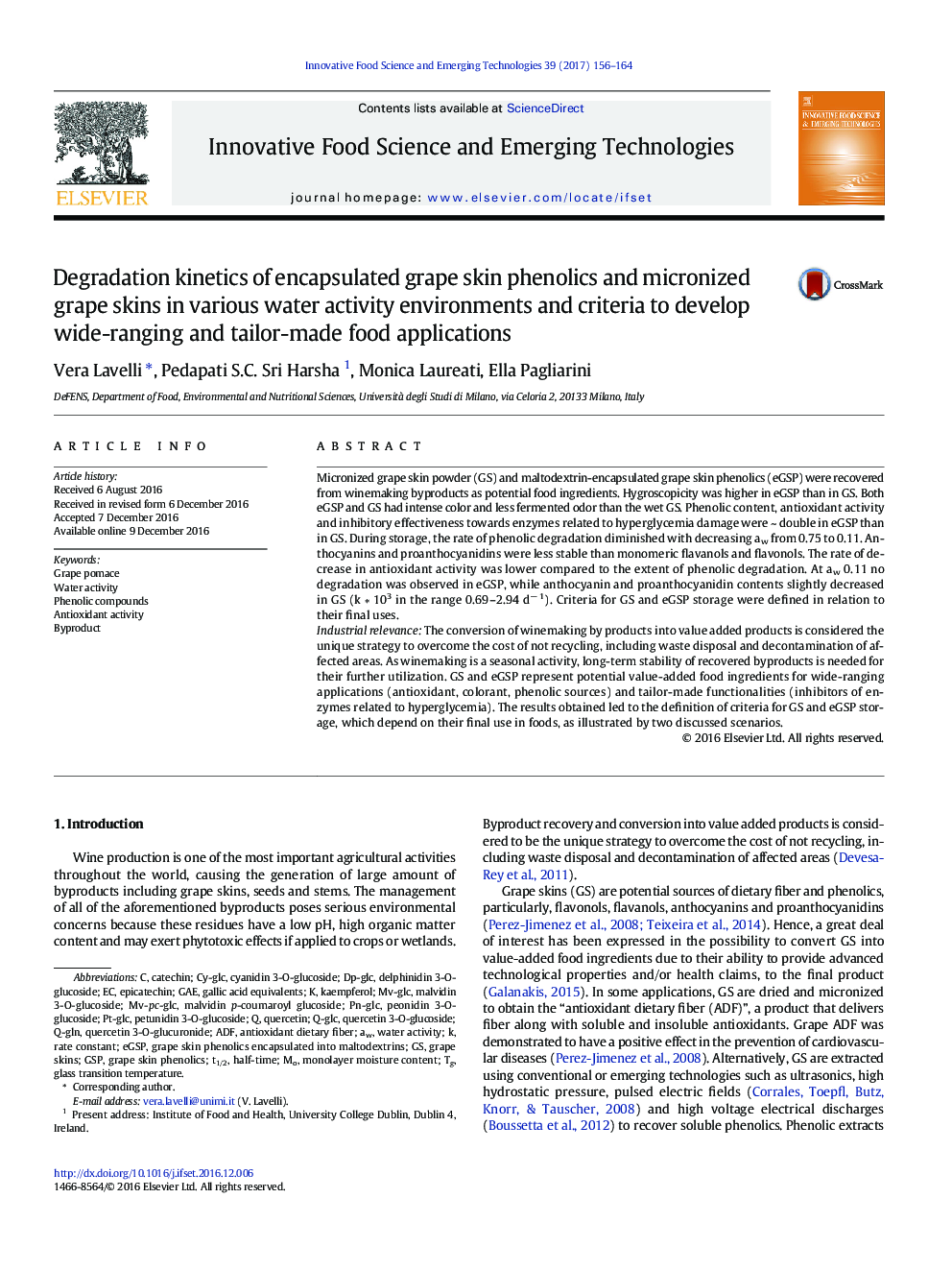| کد مقاله | کد نشریه | سال انتشار | مقاله انگلیسی | نسخه تمام متن |
|---|---|---|---|---|
| 5521860 | 1545529 | 2017 | 9 صفحه PDF | دانلود رایگان |
- Grape skins (GS) and encapsulated GS phenolics (eGSP) had intense red color over the pH scale and low fermented odor.
- eGSP had higher hygroscopicity, water solubility and phenolic content than GS.
- Antioxidant activity and inhibition of enzymes related to hyperglycemia was ~Â double in eGSP than in GS.
- Rate of individual phenolic degradation diminished with decreasing aw from 0.75 to 0.11.
- Criteria for GS and eGSP storage were defined in relation to their final uses.
Micronized grape skin powder (GS) and maltodextrin-encapsulated grape skin phenolics (eGSP) were recovered from winemaking byproducts as potential food ingredients. Hygroscopicity was higher in eGSP than in GS. Both eGSP and GS had intense color and less fermented odor than the wet GS. Phenolic content, antioxidant activity and inhibitory effectiveness towards enzymes related to hyperglycemia damage were ~ double in eGSP than in GS. During storage, the rate of phenolic degradation diminished with decreasing aw from 0.75 to 0.11. Anthocyanins and proanthocyanidins were less stable than monomeric flavanols and flavonols. The rate of decrease in antioxidant activity was lower compared to the extent of phenolic degradation. At aw 0.11 no degradation was observed in eGSP, while anthocyanin and proanthocyanidin contents slightly decreased in GS (k â 103 in the range 0.69-2.94 dâ 1). Criteria for GS and eGSP storage were defined in relation to their final uses.Industrial relevanceThe conversion of winemaking by products into value added products is considered the unique strategy to overcome the cost of not recycling, including waste disposal and decontamination of affected areas. As winemaking is a seasonal activity, long-term stability of recovered byproducts is needed for their further utilization. GS and eGSP represent potential value-added food ingredients for wide-ranging applications (antioxidant, colorant, phenolic sources) and tailor-made functionalities (inhibitors of enzymes related to hyperglycemia). The results obtained led to the definition of criteria for GS and eGSP storage, which depend on their final use in foods, as illustrated by two discussed scenarios.
Journal: Innovative Food Science & Emerging Technologies - Volume 39, February 2017, Pages 156-164
